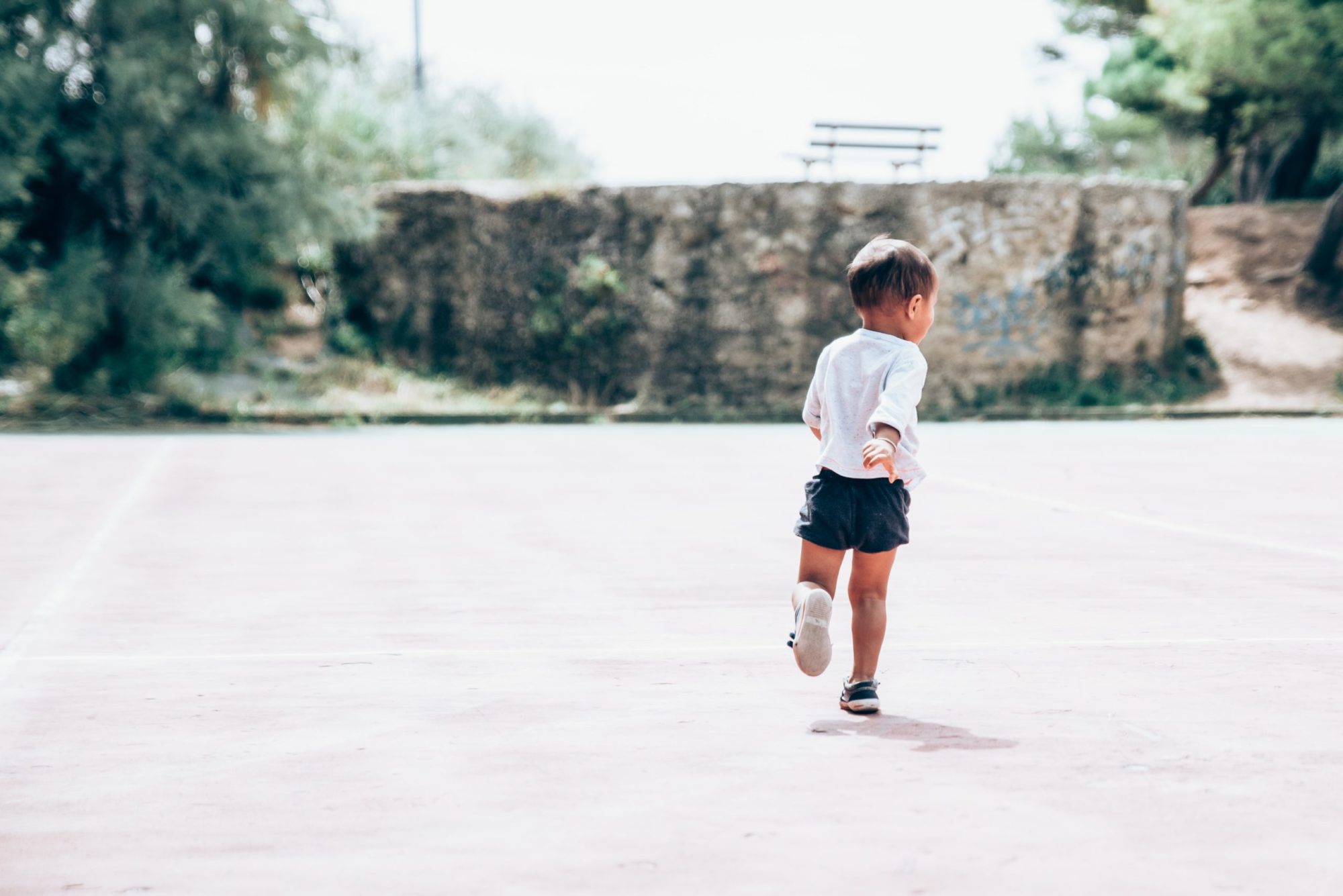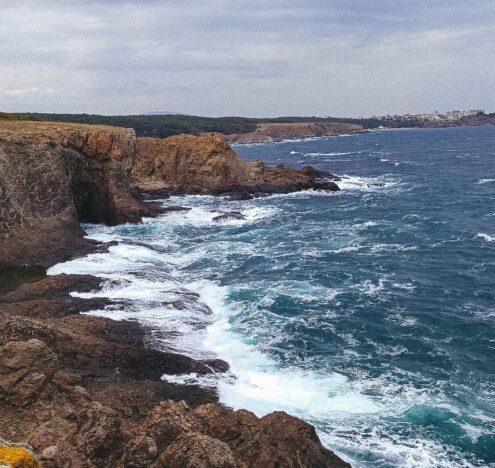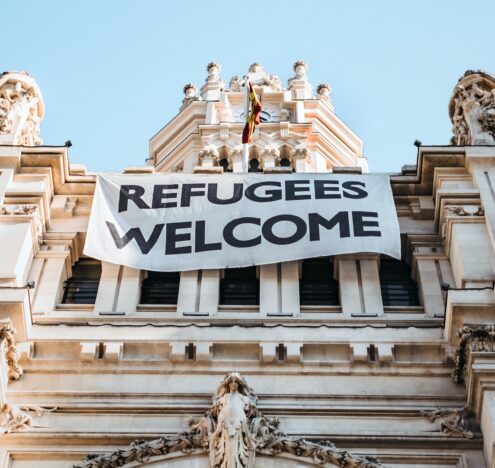It is my son’s fifth birthday party and I am with my mother, wife and three sets of parents trying to manage four energetic kids during a pandemic. A year ago, twenty of my son’s classmates ran around wild in the big backyard. This year, with the death toll of COVID-19 surging past 150,000, a similar party was unthinkable. Still, we decided to take a small risk and host a water-themed party featuring masked adults, four individual cupcakes for the kids and strict social distancing for everyone.
“Not too close!” one of the mothers yells down at her kid. I can hear the strain of four months of lockdowns, school closures and disinfectant wipes in her voice.
Unfazed, her kid loads up his water blaster in the kiddy pool and unleashes a massive torrent of water in my son’s face. My son squeals and returns the favor. Soon his other two friends join in by attacking each other with giggles and H2O. Pure, unfiltered laughter flows out of my lungs and I feel optimistic for the first time in a long time. This gift from the kids is contagious. It travels in a chain reaction from me, to my wife, to the parents and finally to my mother. When the deck goes quiet again, my mother speaks in Japanese. “Children keep us moving forward,” she says through her mask. No one else understands her, but I do.
My mother’s stories of her childhood coalesce together and I am transported to 1948. That year, my mother, Yoshino, also turned five years old. My grandmother’s birthday present to her was a day trip from her rural village to Hiroshima city. In my mind’s eye I picture Yoshino, her eight-year-old sister Miyoko and her parents the night before her birthday trip to a city rebuilding after the first nuclear attack in history.
***
“We are going to Oni koen tomorrow!” whispered Miyoko in Yoshino’s ear. The two girls kneeled next to each other on the tatami floor at the family dinner table. Five-year-old Yoshino’s eyes grew wide from her older sister’s words. For the past three days, Miyoko couldn’t stop talking about the special place in Hiroshima they were to visit the next day. Yoshino had mixed feelings about her upcoming trip. Oni koen literally meant the park of the Oni, the evil ogres that were always chasing, capturing and devouring children in her mother’s folk tales. Not only were the Oni frightening, she also knew something scary had once happened in Hiroshima itself. Yoshio ate her dinner quickly, excited but apprehensive.
At the end of the meal, Yoshino’s father reached under the table and produced a curious object.
“Look what I found at the black market today,” he said and placed a shiny metal can on the dinner table. Although no one in the family could read it, the label read “Carnation condensed milk.” Yoshino thought the red flower on the label was pretty.
“Incredible, now they are selling luxury goods? Just last year, it was impossible to find anything but rice and millet,” said Yoshino’s mother. She punched two holes in the can and carefully measured out a single spoonful of condensed milk for each daughter.
Yoshino’s father looked out at his girls with only one eye. His left eye was blind, lost three years ago on August 6th, 1945. On that day, he traveled 30 miles from his village on a fire engine to Hiroshima city. As a first responder, he desperately tried to aid the victims of a weapon that unleashed the same energy that exploded on the surface of the sun. Shortly after he returned to his wife and kids, he felt a strange pain in the back of his left eye. A week later, the eye was gone, sealing up what it had seen in Hiroshima but opening a new outlook on life.
“Go ahead. Try it!” he said.
“Not too close!” one of the mothers yells down at her kid. I can hear the strain of four months of lockdowns, school closures and disinfectant wipes in her voice.
Yoshino took a small nibble of the unknown substance at the end of her spoon. The tiny dollop of absolute sweetness made Yoshino clench her eyes into quarter moons. She followed the deliciousness from her mouth, up to her forehead, and down to her belly. When Yoshino reopened her eyes, she was shocked to find her spoon barren. Dismayed, she watched Miyoko gobble up a big finger full of the stolen, delicious stuff. Yoshino abruptly dropped her spoon in shock, scattering the rest of the precious substance on the tatami floor. Before the spoon came to rest, Yoshino’s tears were splashing on the delicate camphor wood of the dinner table.
“Yoshino! Yoshino! Stop crying!” commanded her father, his usually gentle voice turned stern.
“What have I always told you?”
“What’s done is done. Let pain flow down the river,” Yoshino mumbled.
“What else?”
“Don’t get stuck in the past! A strong person always moves forward!” said Yoshino in a tone that was rehearsed but sincere. She hiccupped and the worst of it was over.
***
The next morning, Yoshino, Miyoko, and their mother pulled into a Hiroshima train station that gleamed with new materials. The roof had been completely replaced since it was blown off three years ago, shiny new metal supports kept the building strong and upright, and burn marks on the walls had been meticulously scrubbed clean. They disembarked from their train and merged into a dense throng of men in suits, women in clip-clopping geta sandals and students in neat school uniforms. The station happily strained to contain the vibrant stream of humanity, the result of a population that more than doubled over the past three years.
“Do we really have to go to Oni koen?” Yoshino asked, already feeling a bit overwhelmed.
“Don’t worry, it is the best place ever. And it’s only for kids” replied Miyoko.
Yoshino followed her mother and sister out of Hiroshima station and onto Jonan Dori, one of the city’s major avenues. Yoshino passed Jogakuin high school where over 400 students and teachers were killed by the atomic bomb. Like many schools in Hiroshima, Jogakuin reopened just three months later, although the students lacked textbooks, desks or a roof. When they reached the intersection of Hondori street, Yoshino watched a Hirodan line trolley rumble by. Within a week of the bomb, the same streetcar had resumed chugging back and forth across Hiroshima, its bells bringing hope to those who could still hear them.
Just when Yoshino thought her legs couldn’t walk anymore, they arrived at the Hiroshima branch of the Bank of Japan. Two days after the bomb, 54 bodies were carefully removed from the burned-out structure and off duty tellers returned to their windows to keep the city’s economy moving forward. The bank teller waiting on Yoshino’s mother carefully stamped some papers and gave them back to her. When the papers were folded up and safely placed in their mother’s purse, Yoshino and Miyoko knew they were finally free to visit Oni Koen.
***
Five minutes after leaving the bank, Miyoko took off running as soon as they reached the raised embankment of the Motoyasu river. Yoshino chased after her older sister on skinny, aching legs that kicked up a cloud of brownish dust behind her.
“Wait for me!” she cried, but Miyoko kept lengthening the gap between them. It was hot, unbearably humid and Yoshino was already tired from all the walking she had done that day. But the destination that Miyoko had been talking about for the past three days was finally coming into view. Yoshino put her head down and ran, the sleeves on her yukata flapping like dragonfly wings in pursuit of her sister. On the opposite shore, fishermen watched the two girls race through a small group of adults and into the massive concrete and metal structure just ahead of them.
Yoshino reached the tall weeds surrounding the structure. Although the weeds were the same species that towered over her in her village, the plants in front of her were wispy and stunted. Still, they seemed stubbornly determined to survive. They sprouted from the dry ground in patchy, wild bunches, growing almost to the same height as Yoshino.
“Hurry up slowpoke! Hurry!” Yoshino followed Miyoko’s voice through the weeds until she arrived in front of a building made of brick topped by reinforced concrete. The brick was blackened, irregular and full of holes. The concrete seemed too tired to keep standing. Yoshino looked doubtfully at the ruins in front of her. Was this it? Was this really the fun place Miyoko had been talking about?
Miyoko’s smiling head popped out from one of the holes in the brick. Behind her, Yoshino heard the laughter of children.
Yoshino climbed through the hole and entered a magical world of stones, metal and sharp angles. The brick formed a rough circle about the size of a baseball diamond that rose out of the hard, glassy ash that covered the floor. Looking across, Yoshino saw enormous chunks of concrete and debris, rising like stalagmites out of the ash. Above, on top of the brick, was a squat circle of concrete that seemed to have chewed up, partially digested and then violently spit out the metal reinforcing it. The metal overlapped at crazy angles, forming a steel bird’s nest that threw a kaleidoscope of shadows down below.
It was the staircases that took Yoshino’s breath away. Metal and delicate, some stairs rested at odd angles on the ash. Others just floated, dreamlike, against the walls. Stairways ascending and descending into a common empty space.
“Oni gokko! Oni gokko!” “You’re It!” the little boy with a keloid scar on his cheek tagged Yoshino, as soon as she took in her new play space. The kids, many wearing brightly patterned yukatas laughed and pointed at Yoshino. “Oni! Oni! You’re the Oni!” they yelled and rippled away from her like carp in a pond. Yoshino had arrived at Oni Koen.
Yoshino sprinted towards a girl around her age and passed on the Oni to her. The girl chased down a smaller boy who fell down immediately after becoming the Oni. He kept playing with one bloody knee and finally passed the Oni to a girl wearing a brilliant, red and white flower-patterned yukata. On and on they played, some of the kids climbed up the staircases, others hid behind broken concrete, the rest just ran around, celebrating their ability to play in a city with no playgrounds.
Infuriatingly, Miyoko, always one of the fastest kids in her class, successfully avoided capture while Yoshino’s tired legs failed to escape pursuing Oni three more times. But the final time Yoshino was the Oni, Miyoko foolishly climbed up to the top of one of the staircases to nowhere.
“You better not tag me Yoshino! You’ll be in big trouble!” said Miyoko, flattening herself against the wall with no path to escape. Yoshino closed in and tagged her.
“I’ll get you when we get home!” Miyoko descended the stairs, nimble and quick, looking to pass the Oni on to someone else. From her triumphant perch high on the stairs, Yoshino looked down at her sister chasing the mob of running, giggling kids. She looked up through the skeleton of the dome that had miraculously survived the atomic bomb and stared at a perfect patch of blue in the summer sky.
She decided then that it was the happiest day of her life.
***
For a long time, I wondered why my grandmother let my mother play in the burned concrete and broken metal of the genbaku dome. The structure was collapsing, filled with sharp objects and at the time, no one fully understood the effects of radiation on human beings. Yet, my grandmother sat for hours with dozens of other parents watching and listening children fill the dome up with laughter.
It was not until my son’s birthday party that I understood that my grandmother’s birthday present was not only to her daughter, but also to the community determined to rebuild Hiroshima. Children fearlessly embrace happiness and will overcome the most difficult of circumstances to do so. Transmitting this inner strength is their gift to adults. Whether in post-A-bomb Hiroshima or our current coronavirus pandemic, the resiliency of children inspires us to persevere and move forward towards a brighter future.
Ray Matsumiya is the Director of the Oleander Initiative based in Cambridge, MA. The Oleander Initiative empowers peacebuilders from around the world through life-changing programs, workshops and study tours of Hiroshima, Japan. His grandfather was a hibakusha from Hiroshima.





















